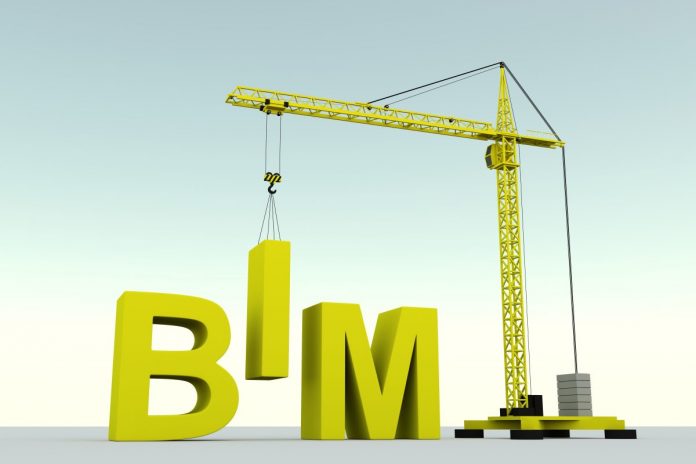Much of the focus of BIM adoption has concentrated on design. But Jason Ruddle, Managing Director of Elecosoft, argues that BIM must also work for contractors to create a built environment fit for the future
We have a skewed view of BIM right now. Much of the BIM debate, and the measurement of adoption, has been front-loaded. While the benchmark NBS National BIM survey has certainly provided valuable insight into BIM adoption for seven years, it disproportionately focuses on architect and design practice adoption, as opposed to construction industry business types.
There’s nothing wrong with this imbalance, if it is recognised. Energising architects and designers was essential to initiate BIM adoption. They must lay its foundations, creating 3D models that can be brought to life, and be a base for ongoing accumulation and enrichment of a data model that ultimately delivers the desired lifetime benefits. Yet engaging them is not enough on its own. Because it is, arguably, in the build stage that BIM offers the greatest opportunity, and has the greatest need, to add value. It is undeniable that BIM must work during build stage and, for contractors, if it is to work overall – but, the needs of those parties whose chief concern is building delivery, such as chartered surveyors and project managers, has not been front of mind enough.
Commentators have noted the imbalance, although some associations, like BIFM, have only recently felt that BIM has now become highly relevant to its membership and started to track adoption. A recent RICS report again highlighted this challenge, saying “much of the information and debate surrounding BIM has centred on design aspects”.
With physical construction such a significant part of building, it is interesting to note that among its main BIM objectives, the government did not break it out. The cost-saving target aims for a 33% reduction throughout the lifecycle; the time-saving target aims for 50% reduction from inception through design and throughout building. The build stage is included within both, but not distinctly. Construction businesses are left to pursue, validate and build BIM benefits. That remains a work in progress, likely to crystallise only after a significant and critical mass of BIM projects have completed.
As a software provider to the project management and planning community within more than 90% of the UK’s top contractors, these needs have been front of our minds since BIM emerged. Six years after the mandate announcement, BIM projects are well underway across the public sector, and momentum is gathering in the private sector. Most contractors are actively engaged on BIM. But are they yet gaining all the value possible, specifically during the build stage?
Some target benefits are obvious. Although a contractor’s choice to use BIM can be down to competitive or contract force majeure, the benefits are nonetheless tantalising. Every contractor would be delighted to reduce build cost, maximise contract profitability and maximise efficiency so that every project completes within its target timeframe, using optimal resources. However, achieving this can only happen if the BIM process works for planners, project managers and the myriad other parties that make the physical build happen.

We see two essential responses needed from contractors:
· Integrate the 3D design model fully into the heart of construction programme plans and project management practices to enable true 4D planning.
· Embrace collaborative principles, not only in the project management core but right through to site and subcontractor management, and client relationship management.
It means making smart choices about tools and platforms so that contractors empower every stakeholder to execute projects in line with BIM, and embed collaborative principles deeply within construction management.
Making these choices requires three essential shifts in thinking:
1. Keeping the model fresh and updated in close to real-time is essential for there to be a stable, complete and unified view of the exact status around which different players can collaborate. The tangible value of BIM in the build centres not just around managing activities and resources but the ability to visualise and demonstrate progress with 4D BIM tools, such as Asta Powerproject.
2. Maintaining this real-time view relies on collaborative progress management that departs from traditional, time-consuming routes. These may see a single project manager periodically circling sites to gather updates or relying on emails and spreadsheet progress updates which must then be manually integrated into the programme. Either process means that programmes will always lag the reality of the build status. Embracing smart Site Progress Mobile tools brings time-savings rapidly.
3. Enabling collaboration and better communication on progress management must engage and involve site and work team leaders. Only those on the ground can ever have an absolute current view of progress. Today, involving them is easy via mobile apps linked to the central programme that deliver the ability to report progress effortlessly with visual proofs directly linked back to the programme.
These shifts drive numerous benefits:
· Progressive 4D BIM visualisation unlocks time-saving, workflow and visibility benefits. PMs can manage the future, as well as the present, and make decisions based on up-to-date information, informed by what will happen, not just what has happened. 4D visualisation that links the 3D realisation of the plan to the activities and timeline brings the impact of change and delay to life. Collaborative teams, including expert subbies and specialist suppliers, can brainstorm through solutions and opportunities for efficiencies and value engineering in meaningful ways. It informs subcontractor activity and resource planning, eases joint deadline setting and enables active involvement in ‘what if’ planning.
· Clients can finally see impacts in context and so understand why one small change can create many large effects – creating a far firmer foundation for negotiation on extensions of time. Meanwhile, business decision-makers can see and feel the reality of the evolving structure and the status of strategic projects. They can plan, make resourcing decisions and forecast more accurately, with a better view of risk and fewer surprises. This is absolutely business-critical on strategic early BIM contracts, where brands are still consolidating their BIM bona fides.
· With the aid of a fully 4D BIM-optimised platform that is open and can exchange information or integrate CAD from a range of tools, it can support collaboration and integration with numerous contributors during the build, including suppliers providing BIM objects alongside their physical products. The right software can play a direct role in supporting essential relationships and keeping every contributor and stakeholder pulling in the same direction.
To make BIM work and create a built environment that is fit for the future means that BIM adoption absolutely must work in the construction phase, as well as throughout the lifecycle. The benefits must be secured for contractors specifically or the benefits won’t accrue through to completion, so that they can be handed over to benefit owners and operators in the future.














